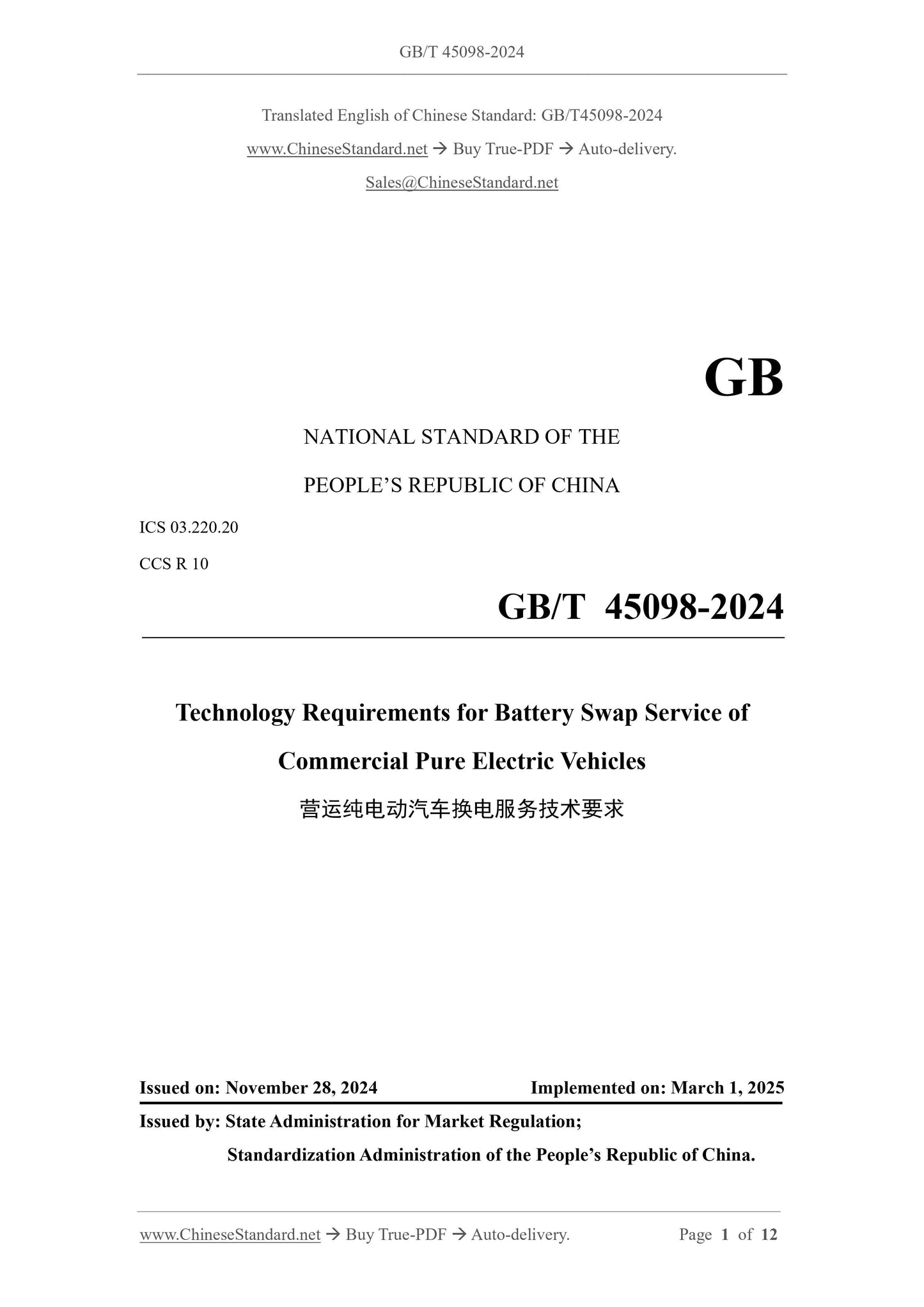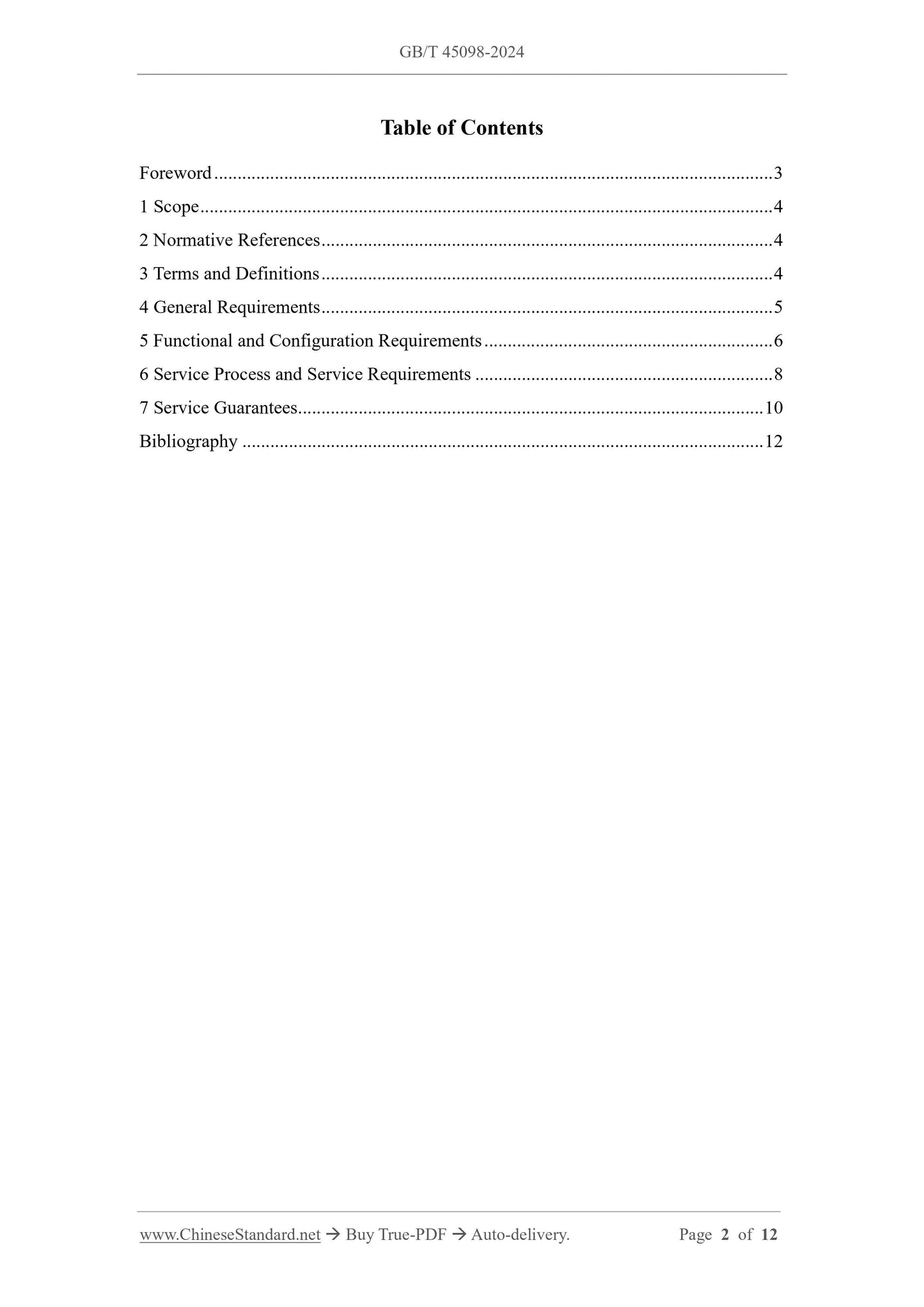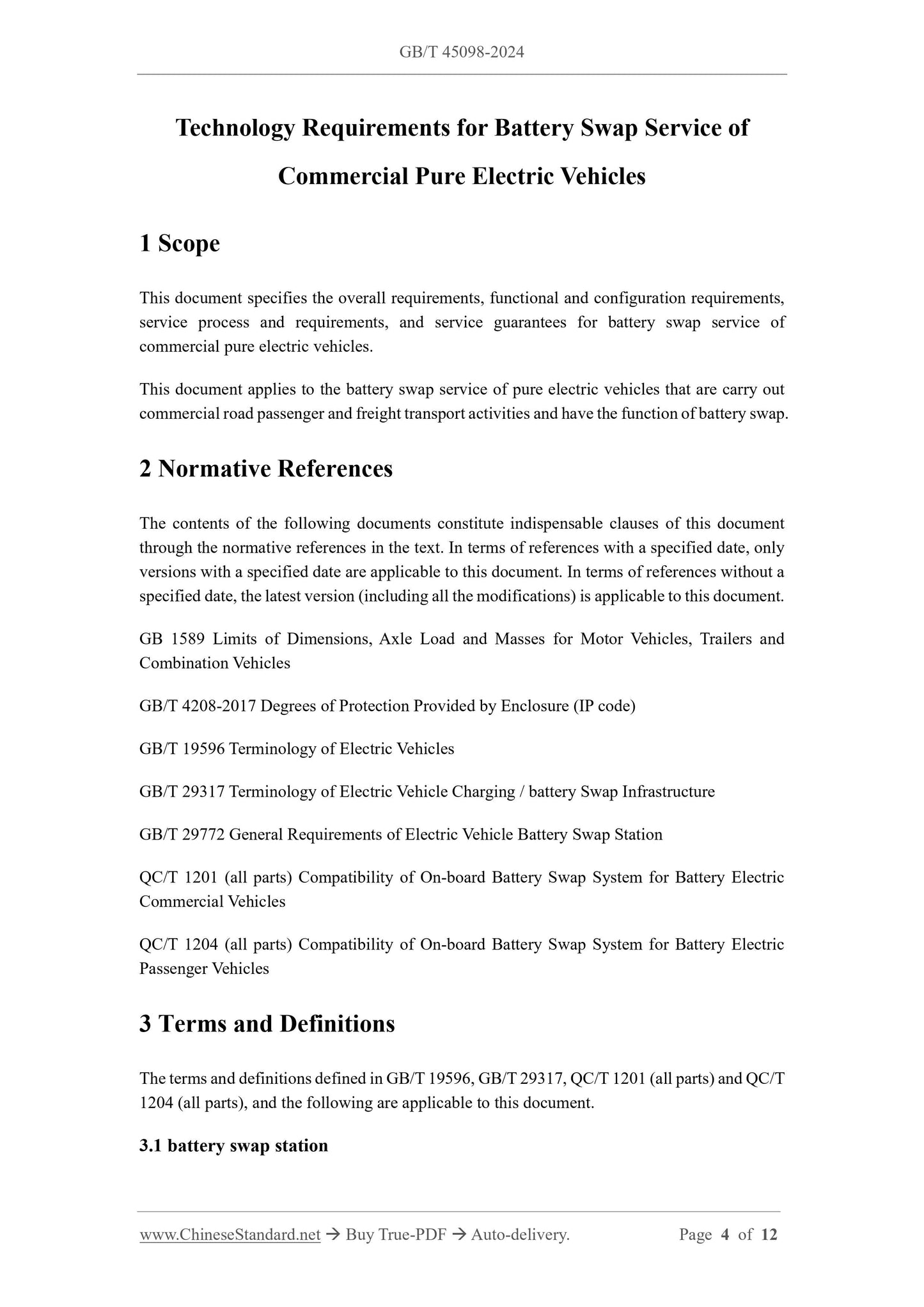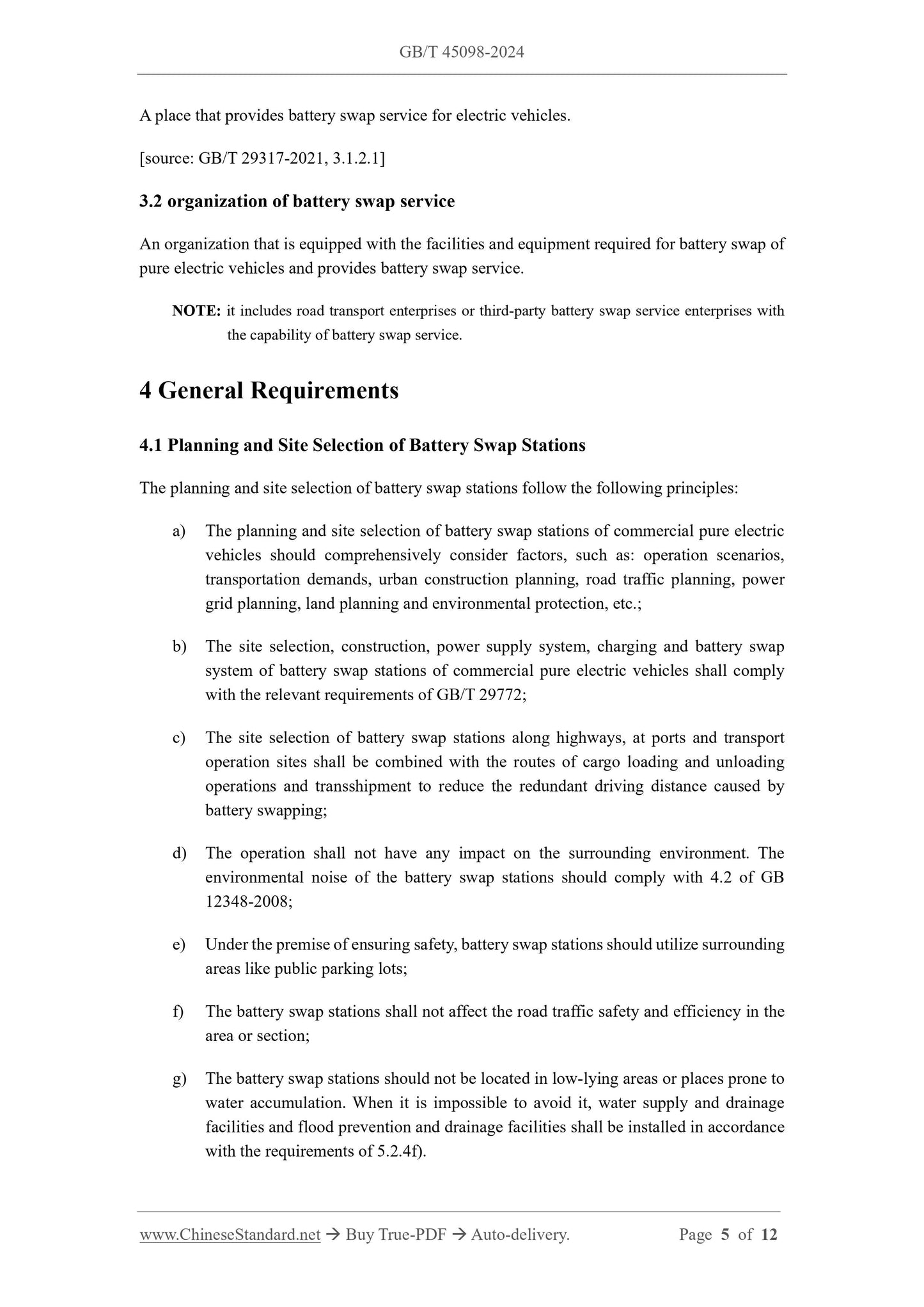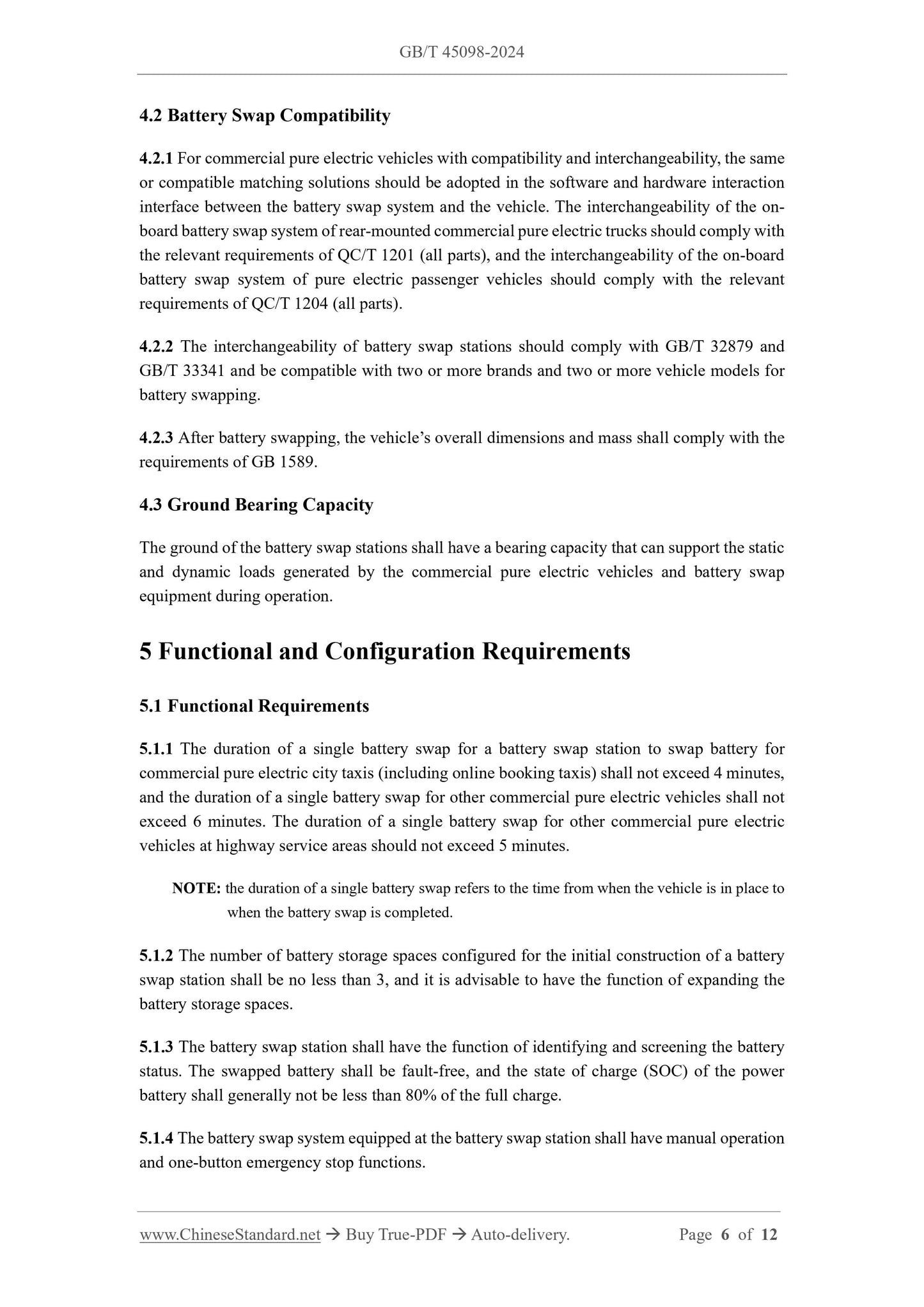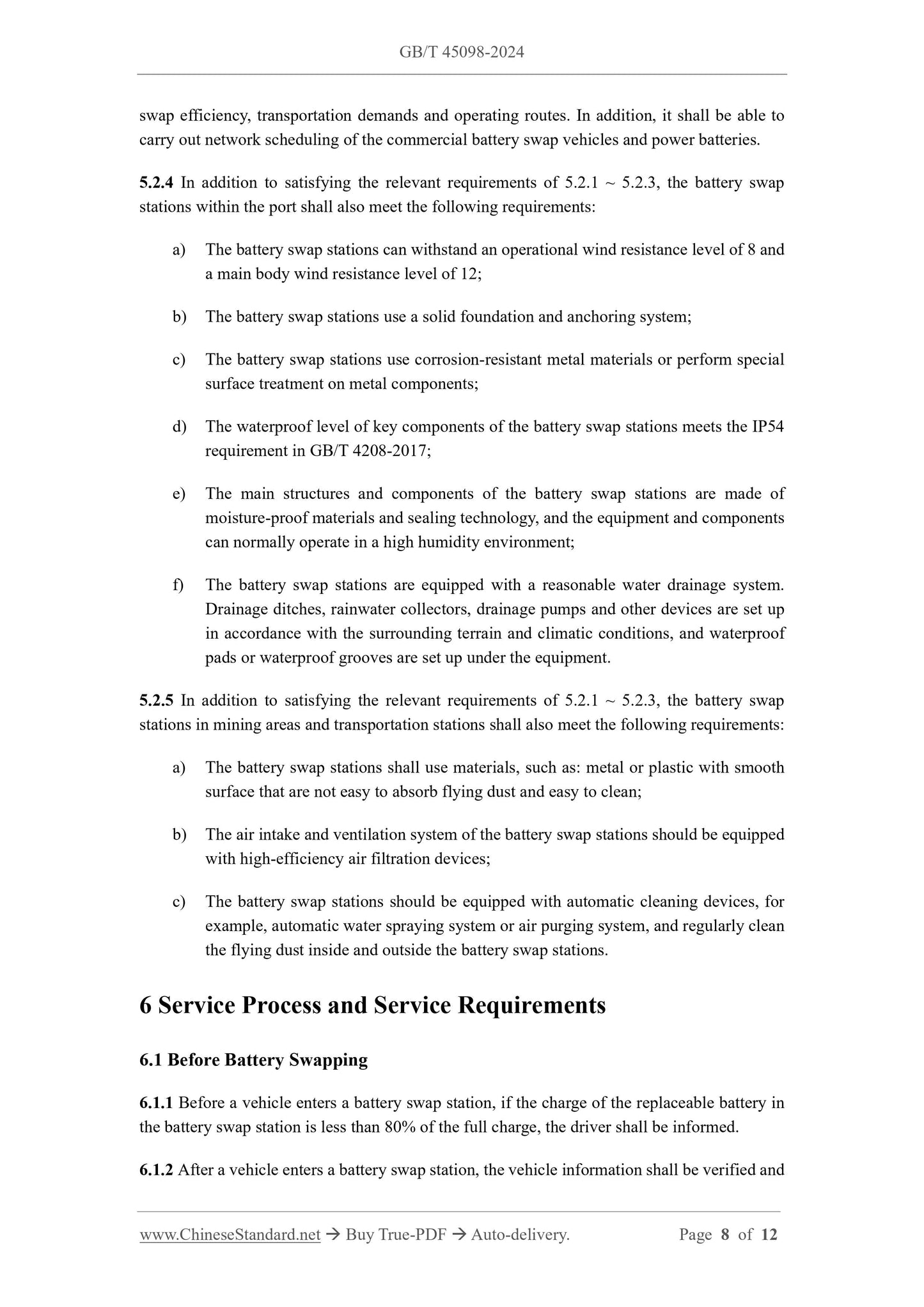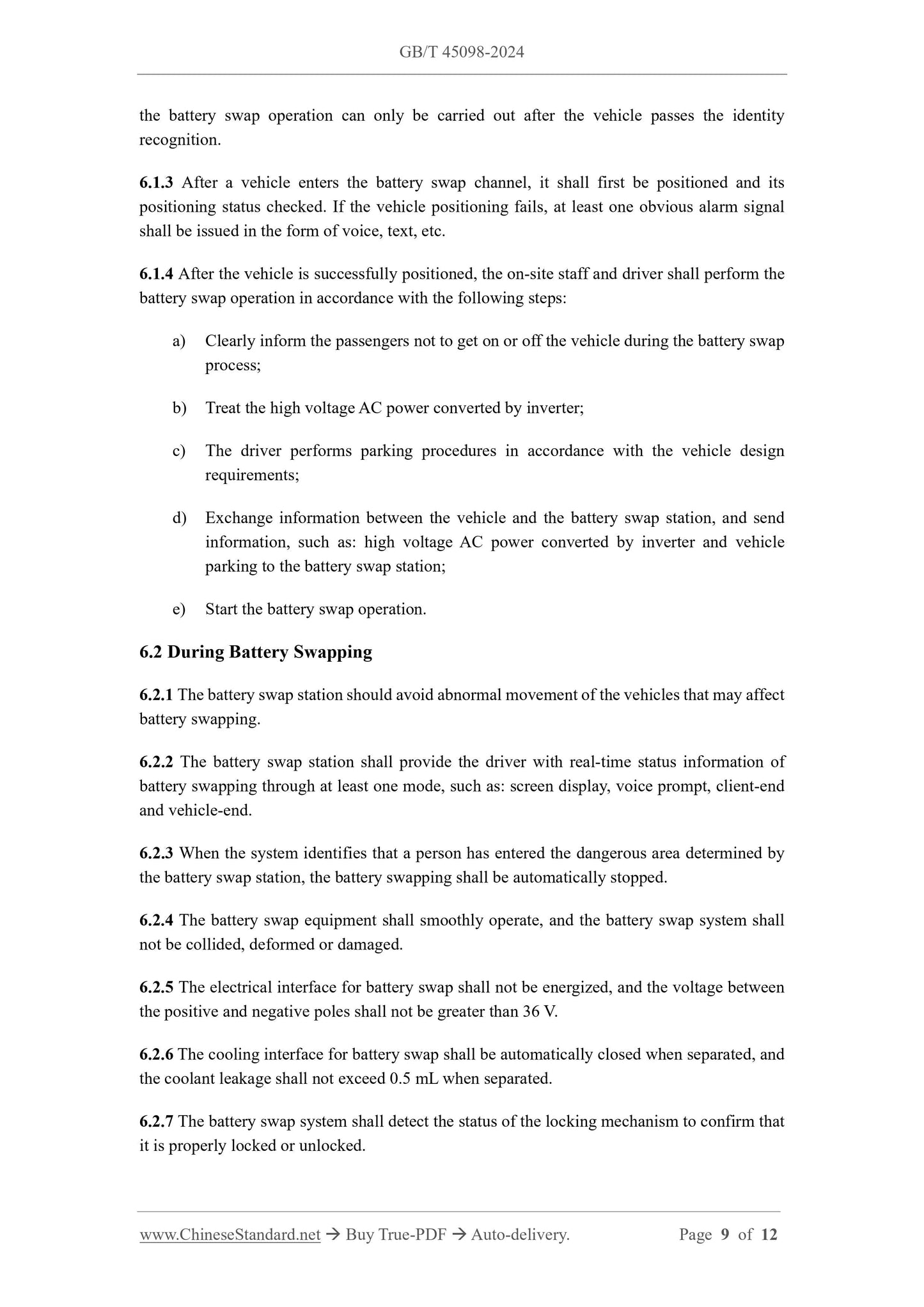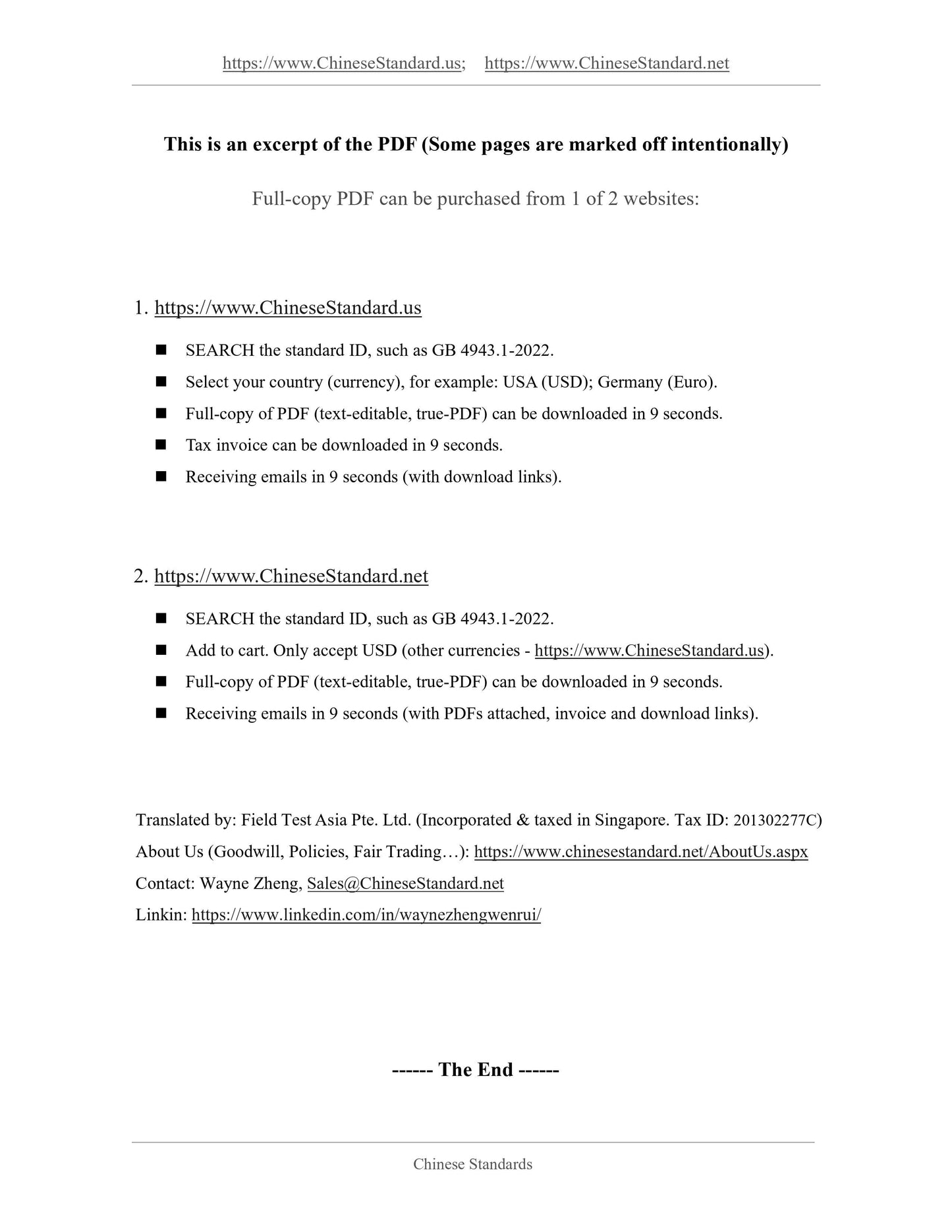1
/
of
8
www.ChineseStandard.us -- Field Test Asia Pte. Ltd.
GB/T 45098-2024 English PDF (GB/T45098-2024)
GB/T 45098-2024 English PDF (GB/T45098-2024)
Regular price
$185.00
Regular price
Sale price
$185.00
Unit price
/
per
Shipping calculated at checkout.
Couldn't load pickup availability
GB/T 45098-2024: Technology requirements for battery swap service of commercial pure electric vehicles
Delivery: 9 seconds. Download (and Email) true-PDF + Invoice.Get Quotation: Click GB/T 45098-2024 (Self-service in 1-minute)
Newer / historical versions: GB/T 45098-2024
Preview True-PDF
Scope
This document specifies the overall requirements, functional and configuration requirements,service process and requirements, and service guarantees for battery swap service of
commercial pure electric vehicles.
This document applies to the battery swap service of pure electric vehicles that are carry out
commercial road passenger and freight transport activities and have the function of battery swap.
Basic Data
| Standard ID | GB/T 45098-2024 (GB/T45098-2024) |
| Description (Translated English) | Technology requirements for battery swap service of commercial pure electric vehicles |
| Sector / Industry | National Standard (Recommended) |
| Classification of Chinese Standard | R10 |
| Classification of International Standard | 03.220.20 |
| Word Count Estimation | 14,164 |
| Date of Issue | 2024-11-28 |
| Date of Implementation | 2025-03-01 |
| Issuing agency(ies) | State Administration for Market Regulation, China National Standardization Administration |
Share
